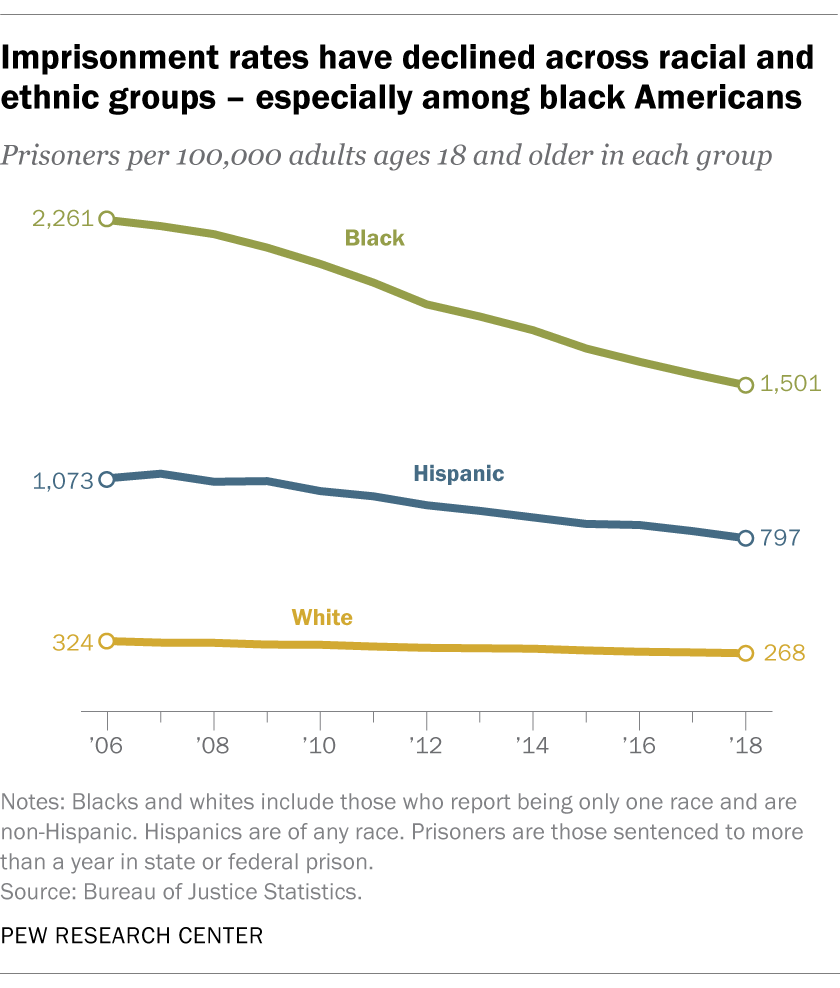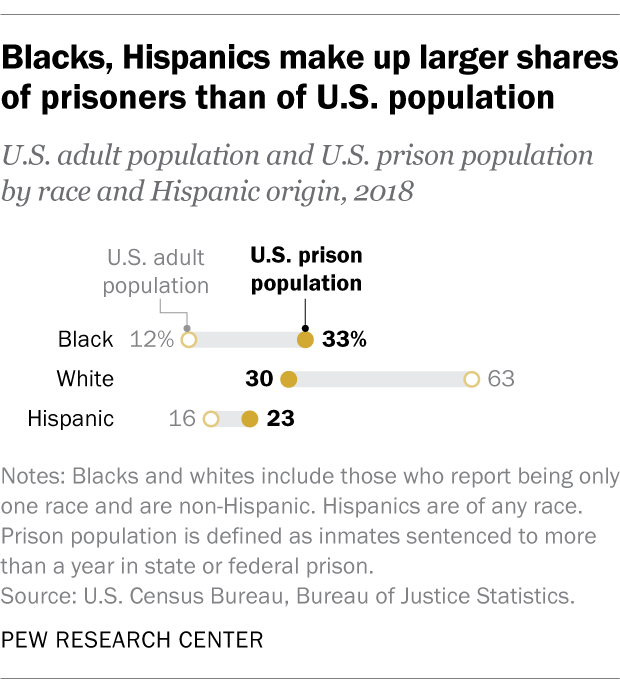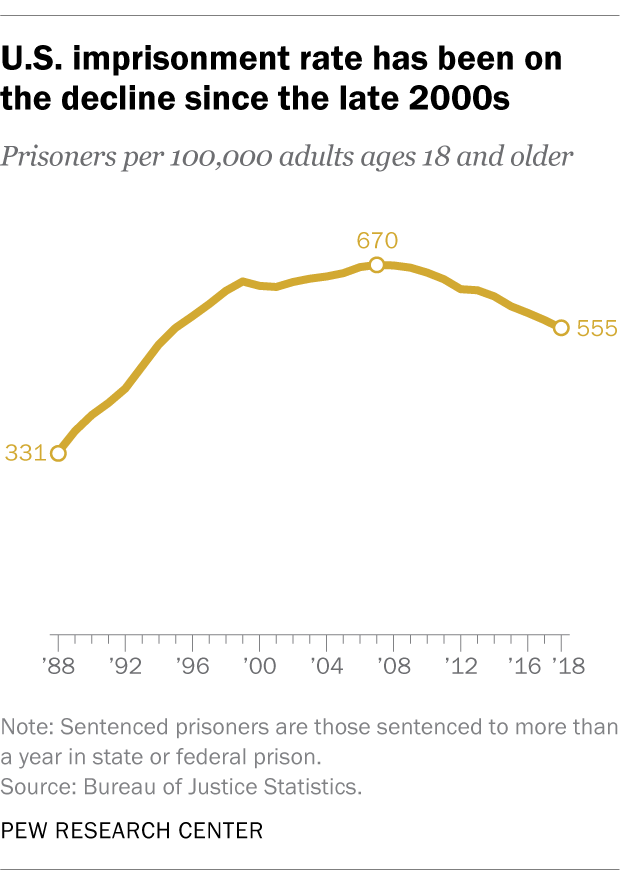The nation’s imprisonment rate is at its lowest level in more than two decades. The greatest decline has come among black Americans, whose imprisonment rate has decreased 34% since 2006.

There were 1,501 black prisoners for every 100,000 black adults at the end of 2018, according to a new report from the Bureau of Justice Statistics (BJS), the statistical agency of the U.S. Justice Department. That was down sharply from 2,261 black inmates per 100,000 black adults at the end of 2006, according to an earlier BJS study. These statistics only count inmates sentenced to more than a year in state or federal prison. They exclude inmates held in local jails and those sentenced to shorter periods of imprisonment.
Imprisonment rates have also declined for the two other major racial or ethnic groups tracked by BJS – Hispanic and white Americans – though not as much as among blacks. Between 2006 and 2018, the imprisonment rate fell 26% among Hispanics and 17% among whites.
This analysis of U.S. imprisonment rates by race and ethnicity is based on data published by the U.S. Bureau of Justice Statistics in April 2020 and January 2018. Data about the racial and ethnic composition of the U.S. adult population is drawn from the U.S. Census Bureau’s 2018 American Community Survey. Black and white Americans include only those who are single race and non-Hispanic. Hispanics are of any race. The analysis is based only on prisoners who have been sentenced to more than a year in state or federal prison. It excludes inmates held in local jails and those sentenced to shorter periods of imprisonment.
While their rate of imprisonment has decreased the most in recent years, black Americans remain far more likely than their Hispanic and white counterparts to be in prison. The black imprisonment rate at the end of 2018 was nearly twice the rate among Hispanics (797 per 100,000) and more than five times the rate among whites (268 per 100,000).

Black men are especially likely to be imprisoned. There were 2,272 inmates per 100,000 black men in 2018, compared with 1,018 inmates per 100,000 Hispanic men and 392 inmates per 100,000 white men. The rate was even higher among black men in certain age groups: Among those ages 35 to 39, for example, about one-in-twenty black men were in state or federal prison in 2018 (5,008 inmates for every 100,000 black men in this age group).
The racial and ethnic makeup of U.S. prisons continues to look substantially different from the demographics of the country as a whole. In 2018, black Americans represented 33% of the sentenced prison population, nearly triple their 12% share of the U.S. adult population. Whites accounted for 30% of prisoners, about half their 63% share of the adult population. Hispanics accounted for 23% of inmates, compared with 16% of the adult population.
Black inmates have long outnumbered white and Hispanic prisoners in the U.S., but these gaps have become narrower as the black imprisonment rate has fallen.
In absolute numbers, there were about 465,200 black inmates in state or federal prison at the end of 2018, a 21% decrease from 590,300 at the end of 2006. The number of white inmates fell 15% during the same period – from 507,100 to 430,500 – while the number of Hispanic inmates increased 5%, from 313,600 to 330,200. The increase in Hispanic prisoners during this period was slower than the increase in the overall Hispanic population in the U.S., which is why the Hispanic imprisonment rate decreased.

Overall, the U.S. imprisonment rate has been on a downward trajectory for the past decade, though the country still has the highest incarceration rate in the world. Counting all races and ethnicities, the U.S. imprisonment rate fell 17% between 2006 and 2018, from 666 prisoners per 100,000 adults to 555 per 100,000. The imprisonment rate at the end of 2018 was about the same level as in 1995, when there were 556 prisoners for every 100,000 adults.
Experts have pointed to a variety of possible factors to explain the decrease in the imprisonment rate, including the pronounced decline among black Americans. One especially noteworthy trend has been a steep drop in crime rates since the mid-1990s. The U.S. violent crime rate fell 51% between 1993 and 2018, while the property crime rate decreased 54% during that span, according to the FBI.
